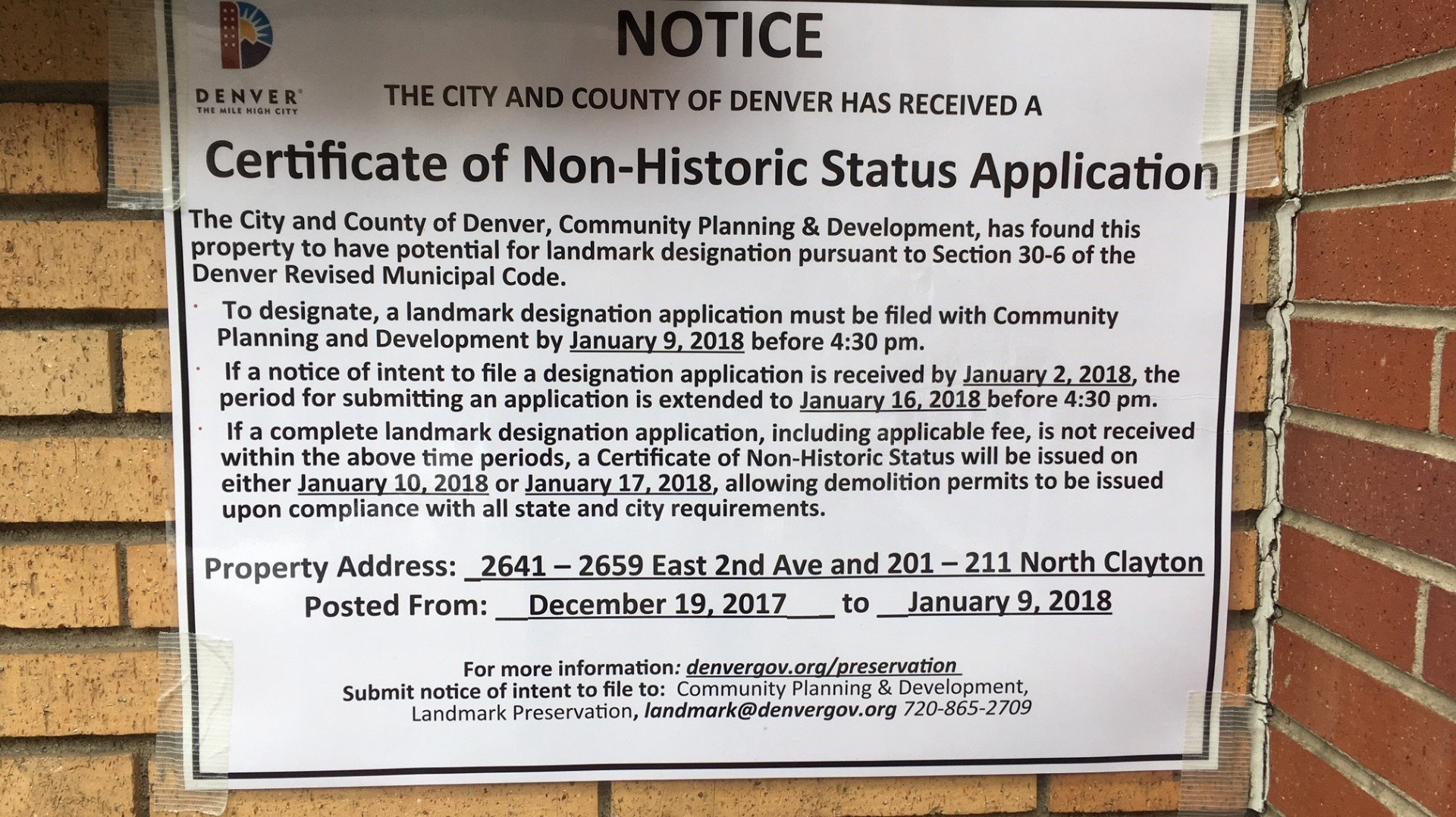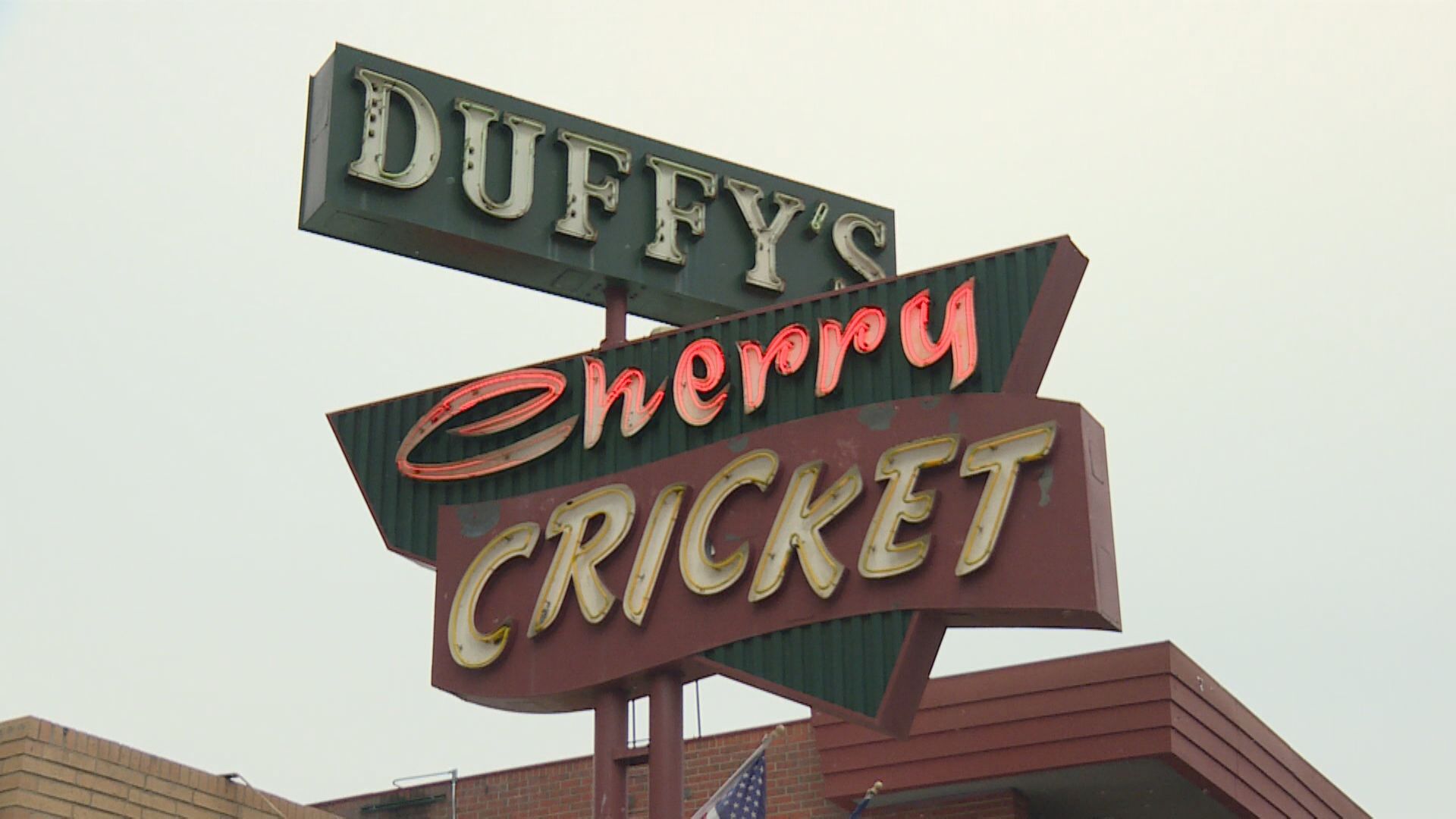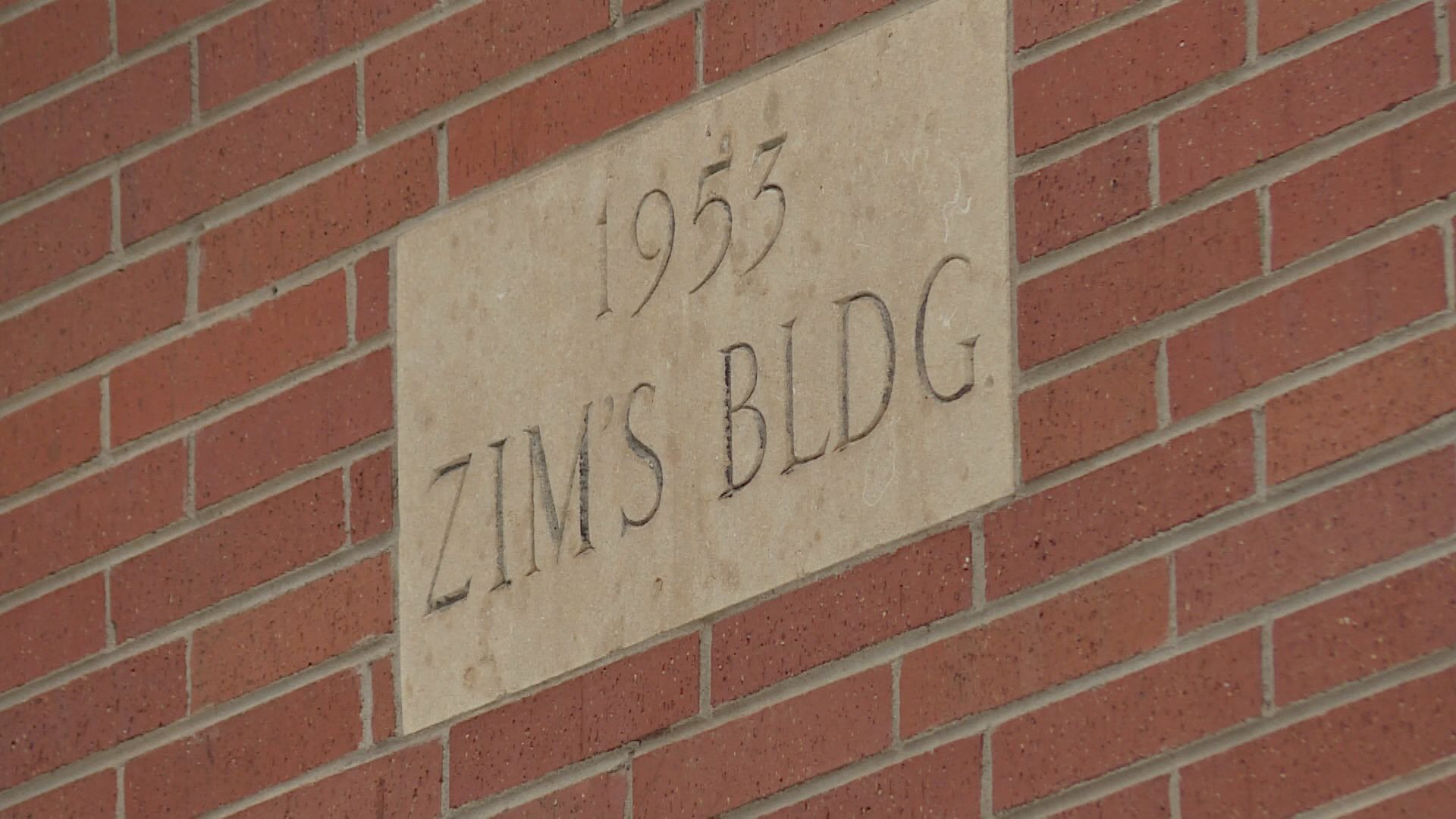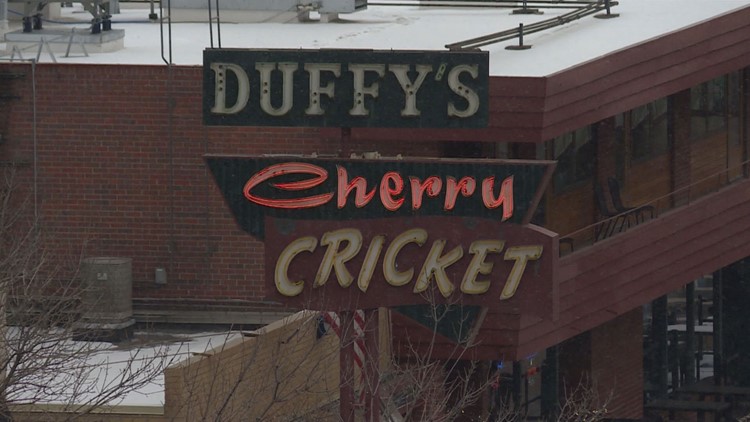The Cherry Cricket has two new signs to go with its neon "Duffy's Cherry Cricket."
A "notice" is taped right next to the door and near the dry erase menu board outside.
The owners of the buildings that house the Cherry Cricket, the tailor behind it and the floral shop along Clayton Street have applied to designate the buildings "non-historic."

"If the certificate of non-historic status is issued, then it means for five years, you can't designate this building as a landmark or historic," said Laura Swartz, spokeswoman for the Denver's Community Planning and Development office. "Within that time period, they could proceed with a demolition application if they wanted to."
That's what piqued our curiosity. Is the Cherry Cricket in danger of getting bulldozed just like every building around it has been lately?
No, according to the owner.
Cherry Cricket owner Lee Driscoll told Next that he has 38 years left on his lease.
Just before this story aired on Next on Tuesday night, the owner of the building that houses the Cherry Cricket told us, "The Cherry Cricket is not going anywhere. There are no plans to close the Cherry Cricket. In no way is the Cherry Cricket in jeopardy."
So, what gives? The top of the application for a certificate of non-historic status describes it as this:
"The Certificate of Non-Historic Status provides certainty in the demolition process."

After our story aired, the company that owns the buildings sent a more formal statement that you can read at the end of this article, which details the intent behind the designation.
"We have reviewed the property and found that it is not a landmark, but there could be potential for it to be designated as a landmark," Swartz said.
If a building is designated as a landmark, it can still be demolished, but it goes through a much more thorough review. Even if the building is not yet a landmark, the city could
initiate a landmark review.
"In Denver, every application for demolition is reviewed to see whether or not it could be designated as a landmark or if it's historic before the demolition application is granted," Swartz said.
"Whoever built this in the 50s, they didn't build it to be an icon to stand forever, they built it to fit a particular need at a particular time, and people who own it today should have the same right to do that," said David Wright, a Cherry Cricket customer.

Let's be real. The buildings that house the Cherry Cricket, the tailor and the floral shop are not going to win any awards based on design. So, what would make them eligible to be historic?
"We look at history, architecture and geography," Swartz said.
As part of the non-historic status process, the city put together information about the history of the Cherry Cricket building.
"It is a rare example of a restaurant surviving in either Cherry Creek, or Denver as a whole, for more than 60 years in the competitive restaurant industry," city planners wrote.
The information included details of how the Cherry Cricket came to be. It started as a restaurant built by Agatha Zimmerman in the 1950s. According to a stone in the middle of the east-facing bricks at 2nd Avenue and Clayton Street, the building is 64 years old.
"1953 ZIM'S BLDG" is written in the stone.

Based on the city's historical write-up, Zimmerman's restaurant was bought and sold a few times before being acquired by Bernard Duffy and turned into Duffy's Shamrock Restaurant and Bar, in the 1960s. That's when the neon sign was changed to include the "Duffy's" name. He sold the restaurant in 1972. In the 2000s, an ownership group, including a brew pub guy by the name of John Hickenlooper, bought the restaurant. Hickenlooper sold his stake in the ownership group when he became Denver mayor.
"The Cherry Cricket is a well-known institution to locals and, because of its high-profile, is a must-see location for visitors," wrote city planners. "The prominent and iconic sign, with its neon lights that clearly reflects its post-war architecture, is a distinctive visual feature in the now, more modern Cherry Creek."
"Most cities and people hate signs. Signs are bad, bad, bad, but if you have a big enough, old enough one, you can't tear it down," Wright said.
In a statement, the owners of the building reiterate that the Cherry Cricket is not going anywhere, but that the focus of the non-historic status is to redevelop the buildings that house the tailor and the floral shop.
"First and foremost, Unico Properties has no plans to demolish the building that contains the Cherry Cricket restaurant. They're a long-term tenant of the building with whom we have a long-term lease, and we join the Cherry Creek North neighborhood in appreciating their historic location and their legendary burgers.In 2015, Unico Properties purchased a portfolio of buildings on the northwest corner of Second Avenue and Clayton Street, among those the building where the Cherry Cricket is located. However our attention, and the focus of the application for certificate of non-historic status which has generated a sign on the property, is on repositioning the adjacent parcels at 227 Clayton Street and 211 Clayton Street. Both of these spaces need work to become occupant ready, and as we consider our options for making improvements, looking at the historic status of all the buildings is part of our research."
If the property owner wanted to apply for a landmark designation, it would cost $250. For anyone not involved in the property, it would cost $875 to apply.
Applications are due by Jan. 9 at 4:30 p.m., unless someone files an intent to apply by Jan. 2, then the city will give you until Jan. 16 at 4:30 p.m. to apply and pay the fee.



